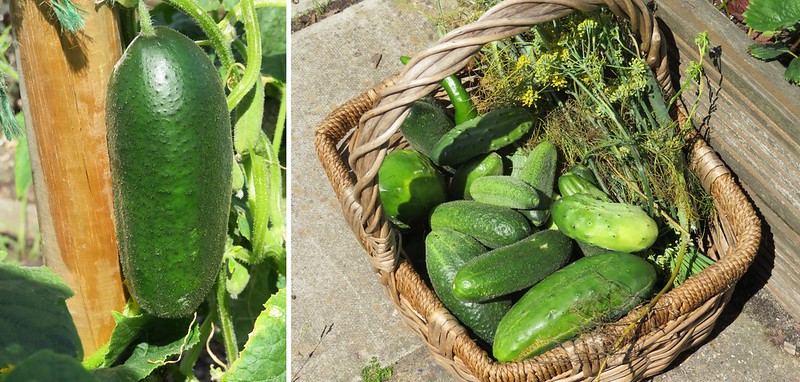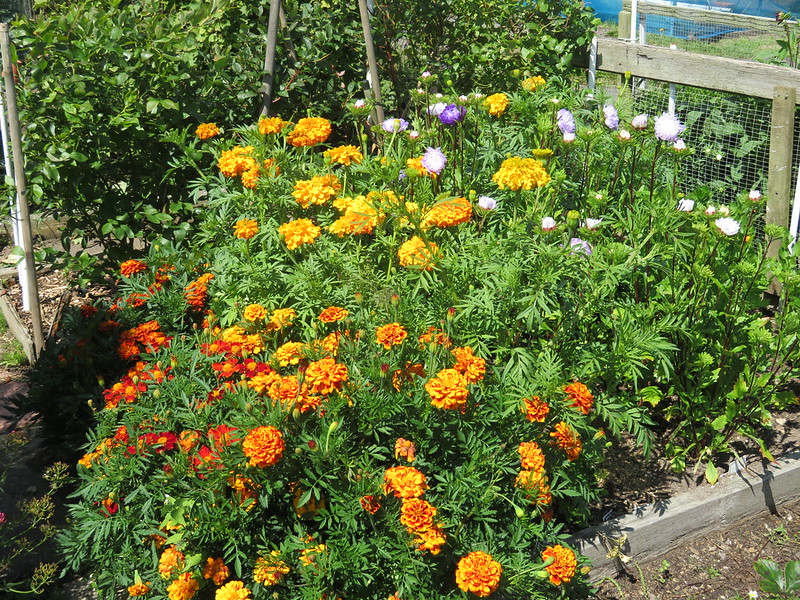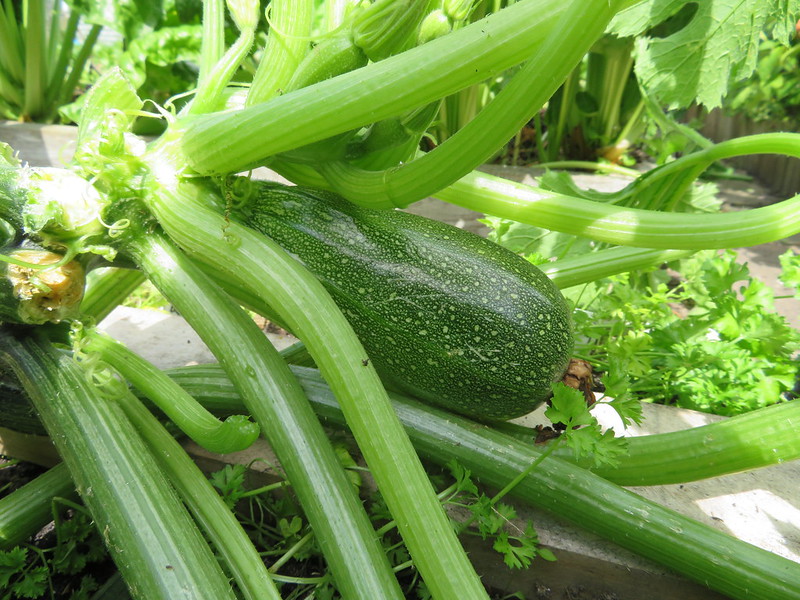DIY: How to Store Dahlia Tubers in Winter - Gardenista:
We packed layers of tubers in shredded paper in a cardboard box before storing it on a shelf in the garden shed.
'via Blog this'
Friday, 10 November 2017
Герань.
Герань: спасти и сохранить - Садовое обозрение:
Что нужно сделать. Чтобы оживить любимую шерань?
Во-первых, очистить растение от засохших соцветий и листьев.
Во-вторых, тщательно промыть листья и стволики, чтобы удалить возможные споры болезней и вредителей. Используйте для этой процедуры Зеленое мыло.
В-третьих, следить за влажностью почвы – для пеларгонии одинаково критичен как недолив, так и перелив. Почва всегда должна быть влажной на глубине 2-2,5 см от поверхности, т.е. верхний слой лучше держать сухим.
В-четвертых, нужно сделать восстановительный полив.
Для этого возьмите литровую банку, налейте до плечиков теплой фильтрованной воды, добавьте 30 г живых дрожжей и столовую ложку сахара.
Накройте салфеткой и поставьте в тепло перебродить в течение 2-3-х дней.
Слейте 100 мл настоя, растворите в 4-х литрах воды, размешайте и поливайте пеларгонии под корень 2 раза в неделю в течение месяца.
Для одного растения достаточно 500 мл раствора на один полив.
Смело используйте эту подкормку и для других комнатных растений.
Далее уход обычный для зимующих на подоконнике растений.
А как сохранить пеларгонии, если места на подоконнике мало, а растений много?
Лучший вариант – обрезать низко растения и поставить прямо в горшках в сухой прохладный подвал.
Но можно и облегчить работу.
Для этого растения вытаскивают их почвы.
Предварительно подсушив, отряхивают с корней грунт, обрезают надземную часть низко, подсушивают срезы и каждое растение заворачивают в газетную бумагу.
Затем растения складывают в ящик и помещают в сухое прохладное помещение – опять-таки в лучше в подвал.
В конце февраля зимующие в подвале растения осматривают, тронувшиеся в рост переносят на свет и начинают постепенно формировать.
'via Blog this'
Что нужно сделать. Чтобы оживить любимую шерань?
Во-первых, очистить растение от засохших соцветий и листьев.
Во-вторых, тщательно промыть листья и стволики, чтобы удалить возможные споры болезней и вредителей. Используйте для этой процедуры Зеленое мыло.
В-третьих, следить за влажностью почвы – для пеларгонии одинаково критичен как недолив, так и перелив. Почва всегда должна быть влажной на глубине 2-2,5 см от поверхности, т.е. верхний слой лучше держать сухим.
В-четвертых, нужно сделать восстановительный полив.
Для этого возьмите литровую банку, налейте до плечиков теплой фильтрованной воды, добавьте 30 г живых дрожжей и столовую ложку сахара.
Накройте салфеткой и поставьте в тепло перебродить в течение 2-3-х дней.
Слейте 100 мл настоя, растворите в 4-х литрах воды, размешайте и поливайте пеларгонии под корень 2 раза в неделю в течение месяца.
Для одного растения достаточно 500 мл раствора на один полив.
Смело используйте эту подкормку и для других комнатных растений.
Далее уход обычный для зимующих на подоконнике растений.
А как сохранить пеларгонии, если места на подоконнике мало, а растений много?
Лучший вариант – обрезать низко растения и поставить прямо в горшках в сухой прохладный подвал.
Но можно и облегчить работу.
Для этого растения вытаскивают их почвы.
Предварительно подсушив, отряхивают с корней грунт, обрезают надземную часть низко, подсушивают срезы и каждое растение заворачивают в газетную бумагу.
Затем растения складывают в ящик и помещают в сухое прохладное помещение – опять-таки в лучше в подвал.
В конце февраля зимующие в подвале растения осматривают, тронувшиеся в рост переносят на свет и начинают постепенно формировать.
'via Blog this'
Thursday, 2 November 2017
Thursday, 19 October 2017
Wednesday, 18 October 2017
Friday, 25 August 2017
Thursday, 10 August 2017
My allotment.

1.

2.

3.

4.

5.

6.

7.

8. lemongrass
Red Kuri

9.

10.

11.

12.

13.

14.

15. Zucchini Fritters.

16.

17. It will be Marrow & ginger jam.


18.

19.

20.

21.
Saturday, 5 August 2017
How to grow cosmos flowers .
How to grow cosmos flowers - Saga:
Cosmos varieties
Pink and white cosmos
Widely available varieties of Cosmos bipinnatus
‘Purity’ (100cm/39 in)
An old single white, but still effective in September light when it looks gloriously fresh.
‘Sensation Mixed’ (120cm/4ft)
A mixture of single colours in shades of pink-red through to white. It’s tall and stately so not as useful in smaller gardens.
‘Sonata Series Mixed’ ( 60cm/2ft)
A shorter cosmos, but with equally large flowers, so this is good at the front of the border, or in a container, or grow for cutting. Sarah Raven has an all-pink version ‘Sonata Pink’.
‘Sweet Sixteen’ (90cm/3ft)
This picotee-edged cosmos has pale petals edged in deep-pink and each flower has some extra petals at the heart, giving each flower a frilly look. ‘Sweet Kisses’ seems very similar.
‘Seashells’ (120cm/4ft)
This taller cosmos comes in a mixture of pinks and whites, but the petals are almost cylindrical or fluted.
‘Cupcakes’ (up to 90cm/3ft)
This is very special, with dished flowers consisting of fused petals that look like cupcake cases. The whites turn blush-pink and many of the flowers have extra petals. Bred by Thompson & Morgan.
‘Hummingbird’ (45cm/18in)
A very new Dutch-bred series with fluted petals on larger flowers. There’s a pink and a white and this is far better than ‘Seashells’.
‘Daydream’ (90cm/3ft)
A white cosmos with powder-pink centres - adored by flower arrangers.
‘Double Click’ (100cm/39in)
This Dutch-bred series was the first to contain semi-doubles and doubles and they look very aster-like. However they do get very heavy-headed in summer rain, and can flop. In good summers they add much to the vase and garden and the flowers last for a long time because thy can’t be pollinated.
‘Xanthos’ (60cm/2ft)
Soft-yellow blooms on compact plants, so perfect for the front of a border or a container. Very new and very well-thought of, this May-flowering cosmos bred in Holland has been given a Fleuroselect Gold Medal this year. You can buy seeds or plugs.
'Apollo' (60cm/2ft)
A brand new British-bred variety, these cosmos flowers come in shades of pink, white and purple.
'via Blog this'
Cosmos varieties
Pink and white cosmos
Widely available varieties of Cosmos bipinnatus
‘Purity’ (100cm/39 in)
An old single white, but still effective in September light when it looks gloriously fresh.
‘Sensation Mixed’ (120cm/4ft)
A mixture of single colours in shades of pink-red through to white. It’s tall and stately so not as useful in smaller gardens.
‘Sonata Series Mixed’ ( 60cm/2ft)
A shorter cosmos, but with equally large flowers, so this is good at the front of the border, or in a container, or grow for cutting. Sarah Raven has an all-pink version ‘Sonata Pink’.
‘Sweet Sixteen’ (90cm/3ft)
This picotee-edged cosmos has pale petals edged in deep-pink and each flower has some extra petals at the heart, giving each flower a frilly look. ‘Sweet Kisses’ seems very similar.
‘Seashells’ (120cm/4ft)
This taller cosmos comes in a mixture of pinks and whites, but the petals are almost cylindrical or fluted.
‘Cupcakes’ (up to 90cm/3ft)
This is very special, with dished flowers consisting of fused petals that look like cupcake cases. The whites turn blush-pink and many of the flowers have extra petals. Bred by Thompson & Morgan.
‘Hummingbird’ (45cm/18in)
A very new Dutch-bred series with fluted petals on larger flowers. There’s a pink and a white and this is far better than ‘Seashells’.
‘Daydream’ (90cm/3ft)
A white cosmos with powder-pink centres - adored by flower arrangers.
‘Double Click’ (100cm/39in)
This Dutch-bred series was the first to contain semi-doubles and doubles and they look very aster-like. However they do get very heavy-headed in summer rain, and can flop. In good summers they add much to the vase and garden and the flowers last for a long time because thy can’t be pollinated.
‘Xanthos’ (60cm/2ft)
Soft-yellow blooms on compact plants, so perfect for the front of a border or a container. Very new and very well-thought of, this May-flowering cosmos bred in Holland has been given a Fleuroselect Gold Medal this year. You can buy seeds or plugs.
'Apollo' (60cm/2ft)
A brand new British-bred variety, these cosmos flowers come in shades of pink, white and purple.
'via Blog this'
Friday, 4 August 2017
Tuesday, 1 August 2017
How to grow winter squash.
- How to grow winter squash - Saga:

When to pick
Harvest winter squash as late as possible and only cut once the skin has thickened and the stalk has become dry, and then store them until late November before starting to eat them.
They are tasteless if eaten fresh because they need six weeks to a couple of months to develop the nutty, sweet flavour.
‘Uchiki Kuri’
'Uchiki Kuri', also known as the Japanese Red Onion squash, is a bright orange sweet squash that I enjoy eating with my Sunday roasts.
It is probably from Hokkaido in Japan - kuri is a Japanese term for squash.
August - October, 4 months from sowing.
Harvest when the skin is hard, leaving out in the sun for 10 days to ripen further.
- A Visual Guide to Winter Squash Varieties | Epicurious.com:
'via Blog this'

When to pick
Harvest winter squash as late as possible and only cut once the skin has thickened and the stalk has become dry, and then store them until late November before starting to eat them.
They are tasteless if eaten fresh because they need six weeks to a couple of months to develop the nutty, sweet flavour.
‘Uchiki Kuri’
'Uchiki Kuri', also known as the Japanese Red Onion squash, is a bright orange sweet squash that I enjoy eating with my Sunday roasts.
It is probably from Hokkaido in Japan - kuri is a Japanese term for squash.
August - October, 4 months from sowing.
Harvest when the skin is hard, leaving out in the sun for 10 days to ripen further.
- A Visual Guide to Winter Squash Varieties | Epicurious.com:
'via Blog this'
Monday, 31 July 2017
Monday, 24 July 2017
Saturday, 22 July 2017
Tuesday, 18 July 2017
Subscribe to:
Comments (Atom)
































